#närke
Explore tagged Tumblr posts
Photo
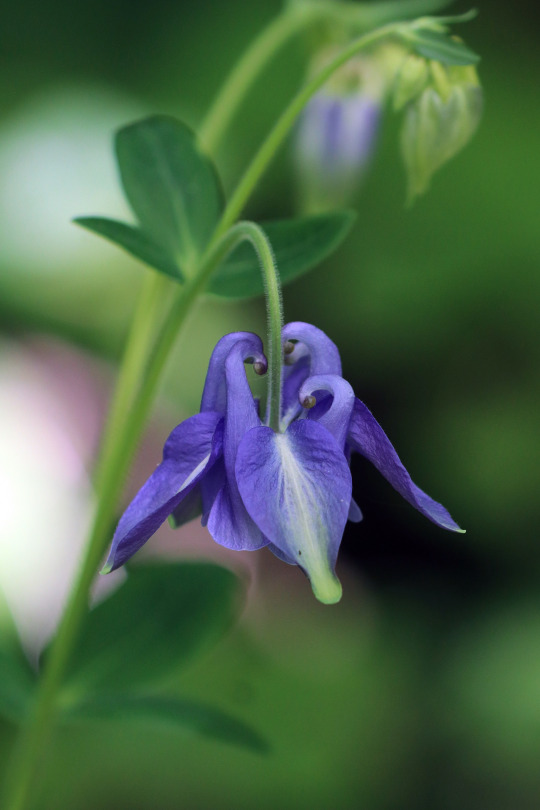

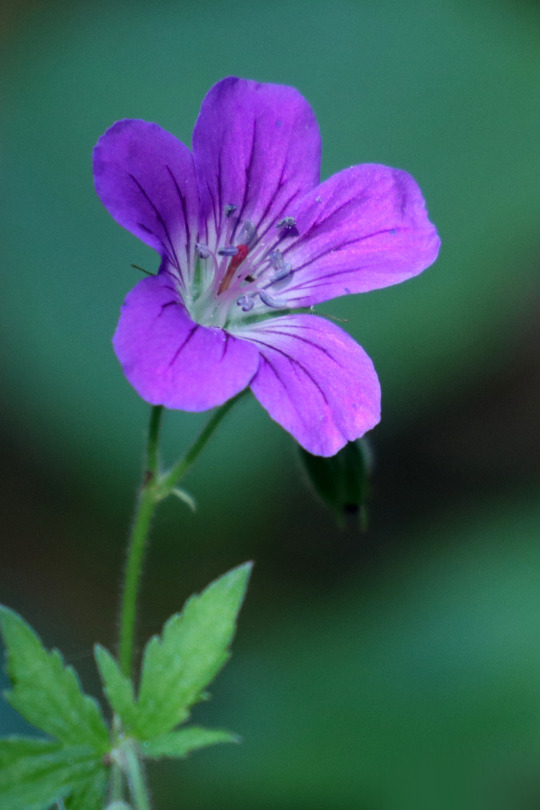
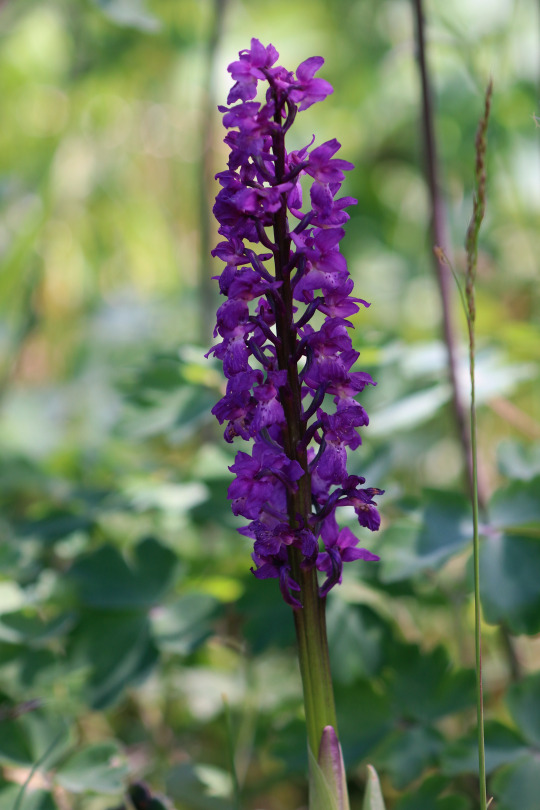
Garphyttan national park in Närke, Sweden (June 3, 2020).
1K notes
·
View notes
Note
Hello! I have a questions but i'm not sure if there's even an answer: do you know whether there is a norse or continental germanic god/goddess that is associated with wind??
Oh Im so glad you asked because I love wind gods and spirits and I got two that I feel like almost no one outside of Scandinavia seemes to know about.
One is norse but not really germanic. The other, is not even norse just swedish af lol.
First I like to tell you about Kåre.
I bet most of you have never heard of him, but I also bet you heard of Ran, or Logi och Ägir.
As some may know, Ran is married to Ägir, a sea jötun. And I bet you know Logi, the jötun who is wild fire personified.
What does this have to do with Ägir? Well Ägir is listed as the brother of Logi and Ägir. Whos father Fornjot, is know in one saga to be the King of the swedish island of Gotland. (Perhaps a hint to an old cult or god of the island.)
These three sons of Fornjot personified the elements or the three most brutal aspects of nature, the wild deep seas, the every hungry wild fires and the ever harsh and cold northen wind. (With a father who rule over an island in the baltic sea that makes rather sense)
The name Kåre is also a swedish word describing a special form of wind or storm.
Kåre is also mentiond in Flatöboken and in one story in Fundinn Nóergr Kåre is the father of Frosti of the frost. But in Hversu the son is named Jökull wish means ice feald. This Jökull is in folklore (mostly in norway) said to be the father of old man winter.
So a lot of maybes here and things that hint he was more well known from Gotland to iceland and norway back in the day but a lot been lost.
But we do know he was a winter and wind jötun and one of the three elemental brothers.
My local group do offerings to him during winter and autum rituals but I know some pepole up north do as well. But overall hes rather forgotten compared to his brothers.
Here is a drawing of him by me:
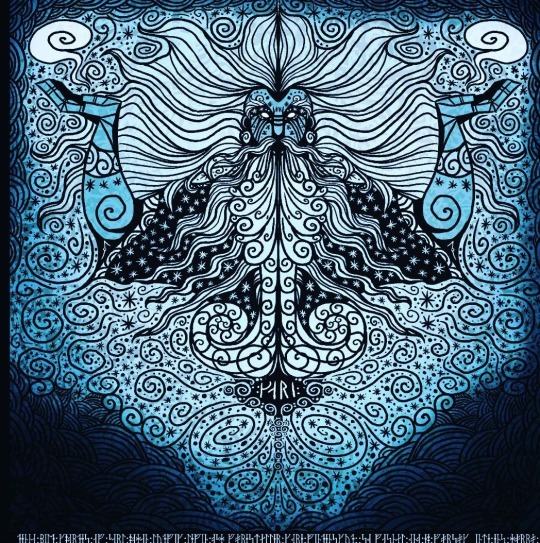
THEN we get to the fun local part.
Ysätters-Kajsa!
Now who the heck is this and whats her deal?
Well Im from a Village called Asker, In Närke.
And back in the day, the farmers spoke about a troll by some, a Huldra by others and by some a spirit/creature who did not fitt any of the molds. Manny famous writers also wrote about her. Most famous of them all is Selma Lagerlöf.
Ysätters-Kajsas name came from the old Moss/lake in Ysätters thats said to be her home or birthplace, but she ruled the weather (but mainly wind) all over Närke but mostly Asker and the sorounding flat plains and fealds.
Ysätterskällan was likely an old offering place to what once was an old goddess or for spirits witch hints to her older roots before she was said to be an evil troll or forest spirit.
The Kajsa in her name is explained in a intervju with an old farmer from Asker in the start of the 1900s dokumentet in the book "Asker, Sant å sånt"
"that was just wat they named them trolls and giants back in the day"
That might seeme weird but tbh in the 1700s there are stories how pepole would toss coins to Kajsa of the sea while fishing.
Or in the 1800s when some in the Mountains and forest called forest and Mountain spirits for Kajsa as well.
It almost seemed as a form of a so called "noa-name" or maybe as the old man said: "it was just what them trolls was named back in the day."
(Im sure there is someone smarter here who can explain this weird Kajsa thing)
But ok, her wind aspect then?
Well first of all, its windy in East Närke.
Like the start of this old poem said
"Den ljuva Närke slätten, där enbart stormen består."
"The lovely Närke plains, where only the storm remains."
Also in manny stories she is said to controll wind and to travel by air.
In one story its said Ysätters-Kajsa looking down on Närke and was like "man this place is pretty, pepole have it good here, we cant have it like that."
And pretty much just made sure its always a bit windy and would play trick on the humans, making them get lost in forest, stealing laundry that hanged out to dry and in general just make the pepole of Närke just a little less comfy in their home.
But she is also a protector or the land!
In one myth, back in the day when a wild fire almost brought an end to the village of Asked she came to save the pepole, because even if she liked to play tricks on them she also deeply loved the pepole and needed them just as much as she they needed her.
So its said when the fire got to the center of the village, a woman was seen dancing up on the church towers roof and as she did storm clouds started to form and with wind and rain the fires was put out and the Village was saved.
Ysätters-Kajsa drawing by me:

This is also why my group call to her and giver her offerings for protection. Shes our local trickster and protector spirit of the wind.
But being a very Asker and Närke spirit. This is one I have to say I would think would be very weird and not really ok if like, pagans in america for some reason started to make offeings to. Because this is not just any big ol god or goddess. This is a local myth and spirit and part of my childhood and culture. I added a lot here from books just to get the facts right but I also just str8 up heared stories about her as a kid. She is just the protector of Asker and the bringer of wind in Närke.
Like if you dont live here, dont.
Go with Kåre then instead whos more wind in general.
But I had to share this about her becouse I just love her and wind spirits and gods in general.
Also, this is a good reminder to check what you have local, you might have myths and stories about old spirits and gods of the land you grow up and live in.
As I often say. The best way to do polytheism and anmism is to know and work with your local land and the spiritits and gods within said land. Because thats the best tools you got right here, right now. The land it self.
#norse mythology#polytheism#heathen#pagan polytheism#norse polytheism#pagan#paganism#fornsed#heathen art#gods#spirits#witch#animism#nordic animism#asker#närke#Ysätters-Kajsa#Ysätterskajsa#Örebro#Odensbacken#polytheist#questions#wind#wind god#north wind#wind goddess#wind spirits#wind spirit
109 notes
·
View notes
Text



Ive been on vacation,and so Ive already finished some drawings of Närke and Dalarna! The boy is dalarna and the girl is Närke. I hope you guys enjoy them :D btw i had to draw using only now quality color pencils so thats why they may look a bit bad (Närkes bad fashion sense is on purpose i swear)
1 note
·
View note
Text

Group of trees on the plain - Prince Eugen * , 1912.
Swedish , 1865 - 1947
Oil on canvas laid on panel, 49 x 62.5 cm.
Prince Eugen of Sweden and Norway, Duke of Närke *
161 notes
·
View notes
Text
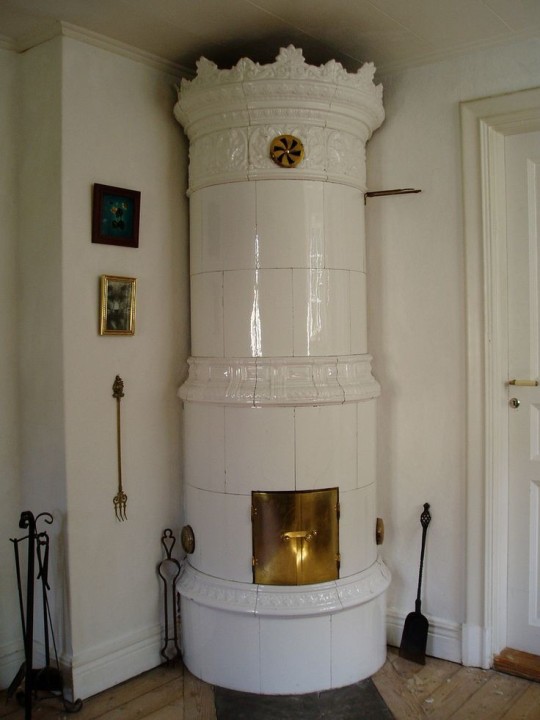
Kakelugn - Tiled Stove
An 1880s neo-renaissance kakelugn (tiled stove), Mullhyttan, Närke, Sweden.
125 notes
·
View notes
Text

Gathering of sheaves with a yoke of oxen, Hallsberg, Närke, Sweden, 1934 - by Mårten Sjöbeck (1886 - 1976), Swedish
100 notes
·
View notes
Text

Oh finding these two on the same table🥹 Gullviva (cowslip) is mentioned in ’Majas Visa’ by Alice Tegnér; Nalle-Maja is Lullaby’s middle name💖 Gullviva is the landscape flower for Närke. Butterflies are a symbol for Vanessa💖
2 notes
·
View notes
Text
Panoptikon is a suite of vocal & electronic music composed by Maria W Horn for an installation in the disbanded Vita Duvan panopticon prison (The White Dove Prison) in Luleå, Sweden.
From the opening of Vita Duvan in 1856 until its closure in 1979, prisoners were detained for theft, perjury, drunkenness, domestic violence, and vagrancy. More than fifty women were charged with miscarriage & abortion (which was labeled as child murder); however, they did not spend much time at the prison before facing execution by capital punishment.
The circular prison structure of Vita Duvan, which enabled central monitoring, was meant to create a sense of omniscient surveillance. The panopticon made the inmates aware that they could be monitored at any time without having any way of checking if this was actually the case. Through the extensive reform of the Western penal system from the 18th century onwards, the former corporal punishments of torture and public humiliation were replaced by new technologies for social control through spatial isolation and surveillance. The individual prisoner often spent the first three years in complete isolation, during which all contact with other prisoners was strictly forbidden. The prison interior was seen as an efficient and silent machinery whereby an inner psychological change would gradually occur in the prisoner through solitary confinement and isolation.
In the compositional process, Maria W Horn has tried to imagine how consciousness is affected by the sensory deprivation of the isolation cell, where the only indication of the passing of time was found in cycles of daylight amongst the silence, uncertainty, and solitude.
Panopitkon was originally presented as a multichannel sound and light installation where the imagined individual voices of the inmates were represented by loudspeakers placed in the various cells of the prison – each voice striving for community but hindered by the forced isolation of the prison architecture. The composition consists of three vocal parts that relate harmonically to a synthesized chord cycle. Together, these form a sounding body that slowly pulses in synchronization with the illumination of the panopticon system.
Omnia citra mortem (everything until death) is a legal term that means the accused who did not confess their crime could not be sentenced to death, but only to torture until a confession was made. Hæc est regula recti (this is the rule for correctness) derives from Nicolas Andry's book L'orthopedie, the art of correcting and preventing deformities in children. The melody and text used in Vita Duva Lament is a traditional folk song from Närke arranged to fit within the harmonic context of the vocal cycle.
6 notes
·
View notes
Text
How am I only finding out about this man today? 😭 And why is Tumblr sleeping on the homosexual bachelor prince of Sweden who devoted his life to art and bequeathed all his earthly belongings to the nation?
Prince Eugen was born at Drottningholm Palace as the fourth and youngest son of Prince Oscar, Duke of Östergötland. His mother was Sophia of Nassau. The newborn prince was granted the title of Duke of Närke. Upon his father's accession to the thrones of Sweden and Norway as King Oscar II, the Duke of Närke became fourth in line to the throne. Showing early artistic promise, he studied in Paris, and went on to become one of Sweden's most prominent landscape painters. Throughout his life Prince Eugen was a supporter of fellow artists, and also involved in many cultural organisations and committees. A homosexual bachelor, he bequeathed his villa Waldemarsudde at Djurgården in Stockholm, and its collections, to the nation. It is now one of Sweden's most popular museums.
Here is some of his art:

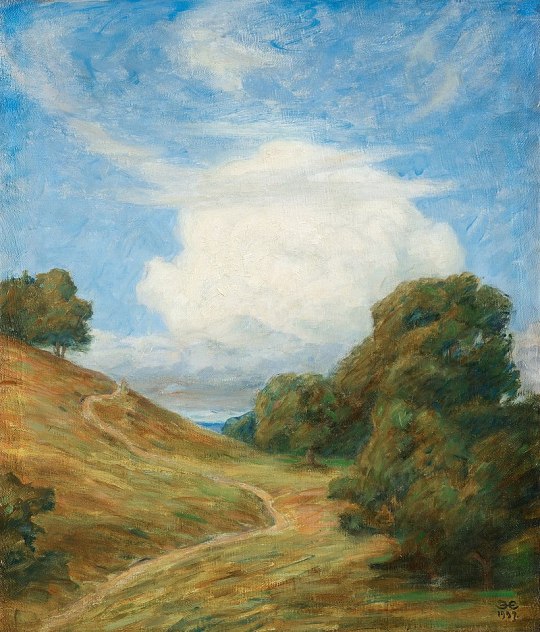



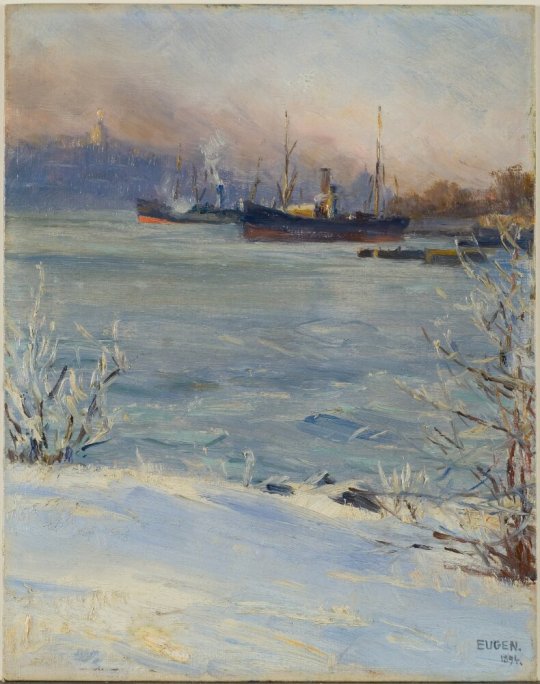
4 notes
·
View notes
Photo


Eurasian red squirrel/ekorre. Garphyttan national park in Närke, Sweden (June 3, 2020).
320 notes
·
View notes
Photo
Prins Eugen (1865-1947) 尤金王子 /他是瑞典近現代著名畫家,藝術家,奧斯卡二世最小的兒子。他的私宅Waldemarsudde現在是瑞典的一個美術博物館。 He was a Swedish painter, art collector, and patron of artists. The Duke of Närke became fourth in line to the throne. Showing early artistic promise, he studied in Paris, and went on to become one of Sweden's most prominent landscape painters. Throughout his life Prince Eugen was a supporter of fellow artists, and also involved in many cultural organisations and committees. A homosexual bachelor, he bequeathed his villa Waldemarsudde at Djurgården in Stockholm, and its collections, to the nation. It is now one of Sweden's most popular museums.
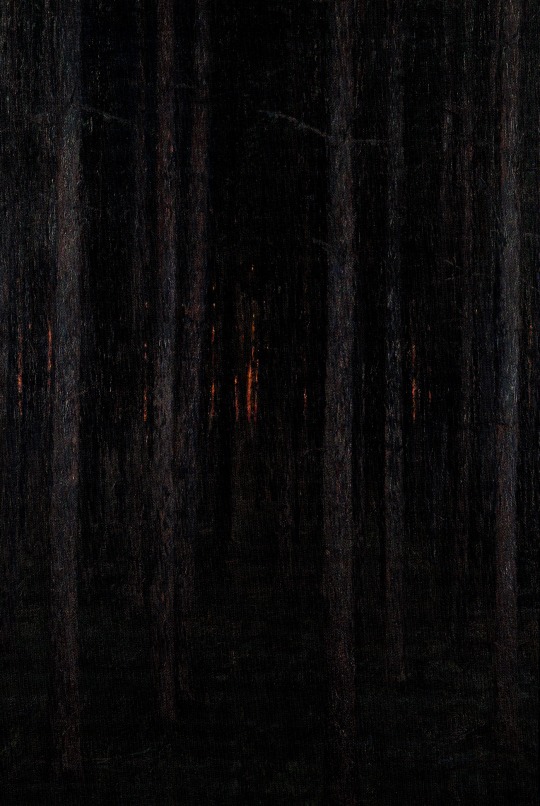
Prins Eugen, Skogen, 1892. Oil on canvas
13K notes
·
View notes
Text
Frejas dop




Medan Axel förlustade sig i Budapest var jag och pojkarna på Frejas dop i Närkes Kils kyrka med efterföljande lunch och fika i församlingshemmet ❤️ Lördag 8 februari 2025.
0 notes
Text
Saga Andersson till FC Rosengård
17-åriga målvaktstalangen Saga Andersson är svenska mästarna FC Rosengårds tredje nyörvärv inför 2025. Hon kommer närmast från KIF Örebro. Andersson har hittills spelat tre matcher i Damallsvenskan och var andra målvakt i Närke bakom Klara Ekstrand som i dag annonserades för BP. “FC Rosengård fortsätter att satsa på unga talanger,” skriver Johannes Wohlert på mästarnas hemsida. Efter Molly…
0 notes
Text
Örebro

Örebro ialah sebuah kota di Swedia yang berpenduduk 95.354 jiwa, terletak di Daerah Örebro, bekas provinsi Närke, Svealand.
0 notes
